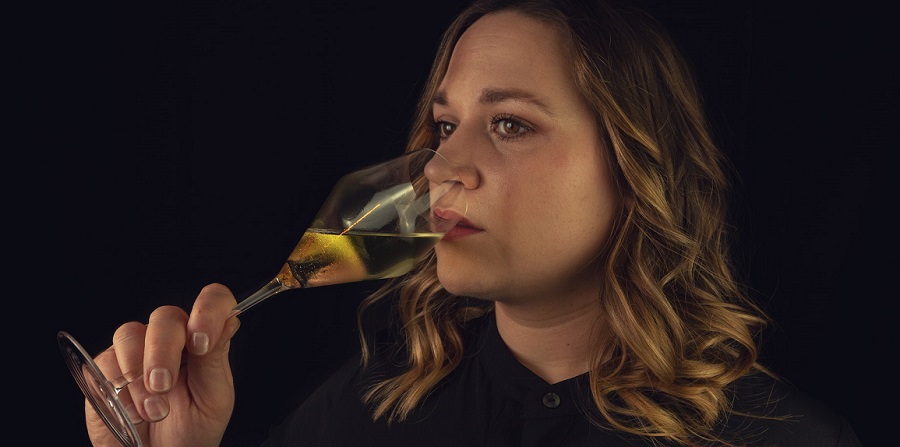
Better Wine Tasting Notes Explained by Wine Type
Are you looking to expand your knowledge about wine tasting?
Do you want to be able to recognize and describe the different aromas, colors, and flavors of wine like a pro?
I can help provide you with a comprehensive guide to understanding wine-tasting notes based on the type of wine.
By the end of this article, you’ll be able to detail wine-tasting notes that capture the essence of each sip.
Understanding Wine Tasting Notes

Before we dive into the specifics of wine tasting, let’s first understand what they are and why they are important.
The tasting notes in wine are a sensory experience when drinking a particular wine.
They include the wine’s appearance, viscosity, aroma, taste, and overall impression.
For example, red wine notes can vary widely depending on the grape variety, region, and winemaking techniques.
So let’s take a look at red wine first.
Red Wine Tasting Notes
When it comes to red wine, the key elements to focus on are the aroma, tannin, and acidity.
The aroma of a red wine can vary depending on the grape variety and the winemaking process specifically fermentation.
Common aromas in red wines include red fruits, such as cherries and berries, as well as spices like cloves and pepper.
As you take a sip of red wine, pay attention to the tannin (bitter and astringent), which gives the wine structure and can make it feel dry or smooth on the palate.
Personally, I’ll often refer to tannins as “Puckerness“.
The acidity of red wine contributes to its freshness and can range from low to high.
Try to sense a “tingling” on your tongue and this will be the acidity level in the wine.
Ok so moving right along…
Here is a list of some common red wine-tasting notes that you’ll encounter:
- Fruit Notes:
- Blackberry: A dark, sweet berry flavor often found in red wines, especially in Cabernet Sauvignon and Syrah.
- Cherry: A tart, red fruit note prevalent in Pinot Noir and Sangiovese wines.
- Raspberry: A bright and slightly tart red fruit note, often in lighter reds like Grenache.
- Plum: A juicy, dark fruit flavor common in Merlot and Malbec wines.
- Berry Notes:
- Strawberry: A delicate, red berry note found in some Pinot Noir and Grenache wines.
- Blueberry: A sweet and often jammy berry note seen in Zinfandel and Shiraz wines.
- Currant Notes:
- Black Currant: A dark and slightly tart berry flavor often associated with Cabernet Sauvignon.
- Citrus Notes:
- Orange Peel: Citrusy and slightly bitter notes, sometimes found in Syrah and Cabernet Sauvignon.
- Spice Notes:
- Black Pepper: A spicy note that can be present in many red wines, notably Syrah.
- Clove: A warm, spicy note found in some Cabernet Sauvignons and Merlots.
- Cinnamon: A sweet and spicy note sometimes found in aged red wines.
- Herbal Notes:
- Mint: Cool, herbal notes, occasionally detected in Cabernet Sauvignon.
- Eucalyptus: Herbal and slightly medicinal notes are often found in Australian Shiraz.
- Floral Notes:
- Violet: Floral aromas are occasionally found in some red wines like Malbec.
- Earth and Mineral Notes:
- Forest Floor: Earthy and sometimes mushroom-like notes found in some Pinot Noir.
- Graphite: A mineral note often associated with some Bordeaux wines.
- Oak Notes:
- Vanilla: Sweet, vanilla-like flavors can result from oak aging in wines like Merlot and Cabernet Sauvignon.
- Cedar: An aromatic wood note found in some Cabernet Sauvignons and Merlots.
- Toasty: Toasted oak notes like caramel or butterscotch, especially in Chardonnay and some red blends.
- Tannin and Texture:
- Tannins: The level of astringency or grip on the palate, often described as “silky,” “velvety,” or “firm.”
- Sweetness and Acidity:
- Sweetness: The perception of sugar in the wine, ranging from dry to sweet.
- Acidity: The level of tartness or freshness in the wine.
- Finish:
- Finish Length: How long the flavors linger on the palate after swallowing.
- Finish Notes: Any additional flavors that emerge at the end of the tasting experience.
- Structure:
- Body: The weight and fullness of the wine, described as light, medium, or full-bodied.
- Balance: How well the various elements (fruit, acidity, tannins, etc.) harmonize in the wine.
Have you tasted any of these? Let me know in the comments below.
White Wine Tasting Notes
Unlike red wine, the aroma of white wine is often more delicate and can range from floral and citrus to tropical fruit notes.
In addition to the aroma, pay attention to the acidity of white wine, as it can contribute to its crispness and balance.
The taste of white wine can vary from light and refreshing to rich and creamy, depending on factors such as grape variety and winemaking techniques.
- Citrus Notes:
- Lemon: Bright and zesty, often found in wines like Sauvignon Blanc and Chardonnay.
- Lime: A fresh, tangy note prevalent in many white wines.
- Grapefruit: A slightly tart and aromatic citrus note, especially in Sauvignon Blanc.
- Tree Fruit Notes:
- Apple: Crisp and refreshing, present in Chardonnay and Pinot Grigio.
- Pear: A soft, juicy fruit note found in wines like Pinot Blanc and Chenin Blanc.
- Peach: A sweet and slightly fuzzy fruit note, common in Viognier and some Chardonnays.
- Apricot: A sweeter and often slightly tangy fruit note in some white wines.
- Tropical Fruit Notes:
- Pineapple: Sweet and tropical, often in wines like Chardonnay and Sauvignon Blanc.
- Mango: Rich and exotic, sometimes found in aromatic white varieties.
- Stone Fruit Notes:
- Nectarine: A juicy and less tart stone fruit note, present in some Chardonnays and Viogniers.
- Floral Notes:
- Honeysuckle: Sweet and fragrant floral aromas, seen in wines like Gewürztraminer.
- Jasmine: Floral and exotic notes found in some white wines.
- Herbal and Mineral Notes:
- Green Apple Skin: A slight bitterness and crispness, occasionally in Chardonnay.
- Wet Stone: Mineral-like notes, often found in wines with high acidity like Riesling.
- Spice Notes:
- White Pepper: A subtle spiciness, sometimes found in aromatic white wines.
- Oak Notes:
- Vanilla: Sweet, vanilla-like flavors from oak aging, notably in some Chardonnays.
- Butterscotch: Creamy and caramel-like notes in some oak-aged whites.
- Sweetness and Acidity:
- Sweetness: The perception of residual sugar, ranging from bone-dry to sweet.
- Acidity: The level of crispness or freshness in the wine.
- Texture and Body:
- Texture: How the wine feels on the palate, such as smooth, creamy, or crisp.
- Body: The weight and fullness of the wine, described as light, medium, or full-bodied.
- Finish:
- Finish Length: How long the flavors linger on the palate after swallowing.
- Finish Notes: Any additional flavors that emerge at the end of the tasting experience.
- Minerality:
- Slate: A mineral note often associated with certain Rieslings and Chardonnays.
- Chalk: A minerality found in some Chardonnay and Sauvignon Blanc wines.
These tasting notes are a guide to understanding the complexity of white wines.
Sparkling Wine Tasting Notes
Sparkling wines have their own unique set of characteristics to consider when writing tasting notes.
The sparkle, or effervescence, of sparkling wine, can range from fine and delicate to vigorous and persistent.
When it comes to aroma, sparkling wines often exhibit notes of apple, pear, and citrus fruits.
In terms of taste, sparkling wines can range from bone-dry to sweet, with varying levels of acidity.
How To Develop Your Wine-Tasting Skills

Now that you understand the basics of tasting notes in the wine, let’s explore some tips to help you develop your tasting skills:
1. Take Notes
When tasting wine, I have seen people take notes to capture each sensory experience.
You can write down your observations about the appearance, aroma, taste, and overall impression of the wine you taste.
This will help you remember the characteristics of each wine and compare them to others in the future.
2. Use Wine Tasting Terms
Now that you have a better guide to wine tasting terms they can help you accurately describe the characteristics of the wine.
Terms like “fruitiness,” “spicy,” “oaky,” and “buttery” will all make more sense when describing the aroma and flavors of wine.
Familiarize yourself with common tasting terms to enhance your ability to describe what you’re tasting.
4. Pay Attention to Wine Aromas
The aroma of wine plays a significant role in the overall tasting experience.
Take the time to identify the different aromas present in the wine and try to distinguish between primary, secondary, and tertiary aromas.
Primary aromas are derived from the grape variety itself, while secondary aromas come from the winemaking process.
Tertiary aromas develop as the wine ages.
5. Explore Different Types of Wine
To become a skilled wine taster, it’s important to explore a wide variety of wines.
Taste wines from different regions, and grape varietal for example:
- Chardonnay: A versatile white grape grown globally, from Burgundy to California.
- Sauvignon Blanc: Known for its crispness, grown in regions like France, New Zealand, and California.
- Riesling: A German grape variety, that produces a range of sweet to dry wines.
- Cabernet Sauvignon: A popular red grape found in Bordeaux, California, and many other wine regions.
- Pinot Noir: Known for its elegance, found in Burgundy and various other cool-climate regions like Prince Edward County.
See If You Can Tatse The Terroir: The concept of terroir emphasizes the importance of a region’s specific environmental factors in grape flavor and wine quality.
6. Winemaking Styles
Also, learn winemaking styles to expand your palate and enhance your understanding of the wine world.
The grape variety largely determines a wine’s style.
For example, Cabernet Sauvignon typically produces bold, tannic red wines, while Chardonnay can yield both oaked and unoaked white wines with various flavor profiles.
7. Learn About Blending
Many regions blend different grape varieties to create unique wine styles, like Bordeaux’s use of Cabernet Sauvignon, Merlot, and others.
Taste Like a Pro
Tasting wine is an art, and you can improve your ability to distinguish and capture the essence of a wine takes practice.
Follow these steps to help you get better wine tasting notes like a pro.
The 5 S’s of Wine Tasting:
- See: Examine the wine’s color and clarity by holding it against a white background. Look for variations in hue and intensity.
- Swirl: Gently swirl the wine in your glass to release its aromas. This helps oxygenate the wine.
- Smell: Put your nose into the glass and take in the aromas. Try to identify scents like fruits, flowers, spices, or oak.
- Sip: Take a small sip and let it coat your palate. Pay attention to the taste, acidity, sweetness, tannins (for red wines), and overall balance.
- Savor: After swallowing or spitting, note the wine’s finish or aftertaste. Does it linger? Is it pleasant?
Remember to take your time, savor each sip, and pay attention to the wine’s aroma, taste, and overall balance.
With dedication and a willingness to learn, you’ll be able to recognize accurate wine-tasting notes like a pro in no time.
Whether you’re a novice wine drinker or a seasoned wine enthusiast, understanding tasting notes is essential for appreciating and exploring the world of wine.
So grab a glass, swirl, sniff, sip, and start your journey to becoming a wine connoisseur!
Also, see these top 10 wine-tasting tour tips so you’ll be prepared.




